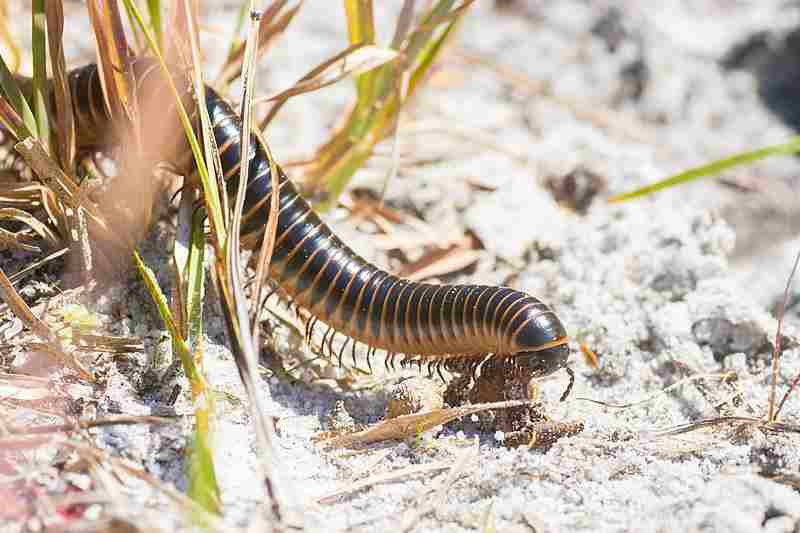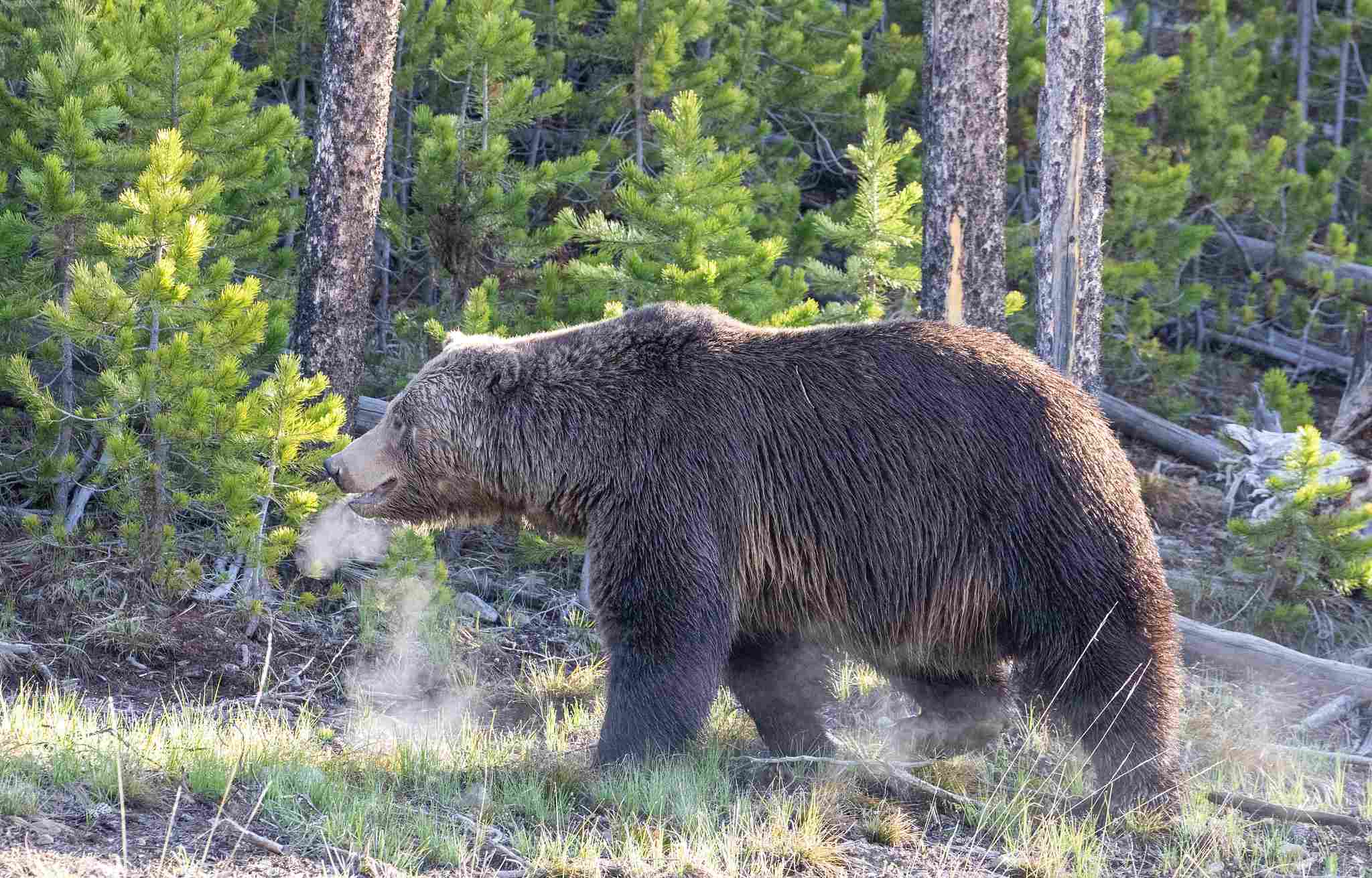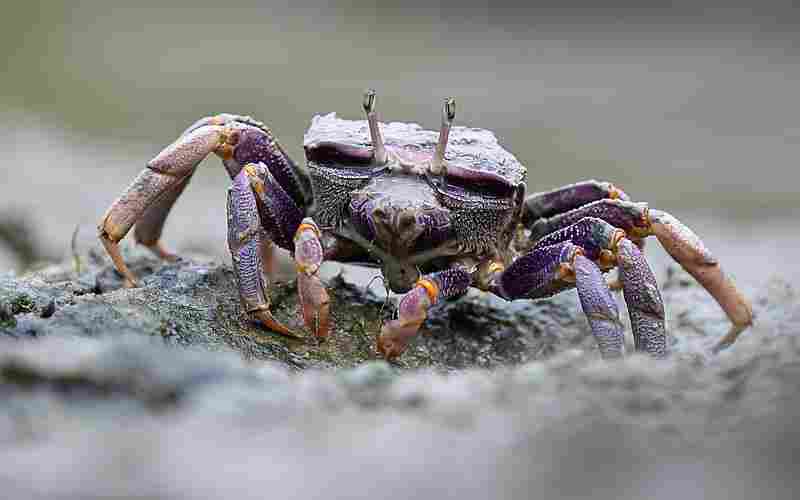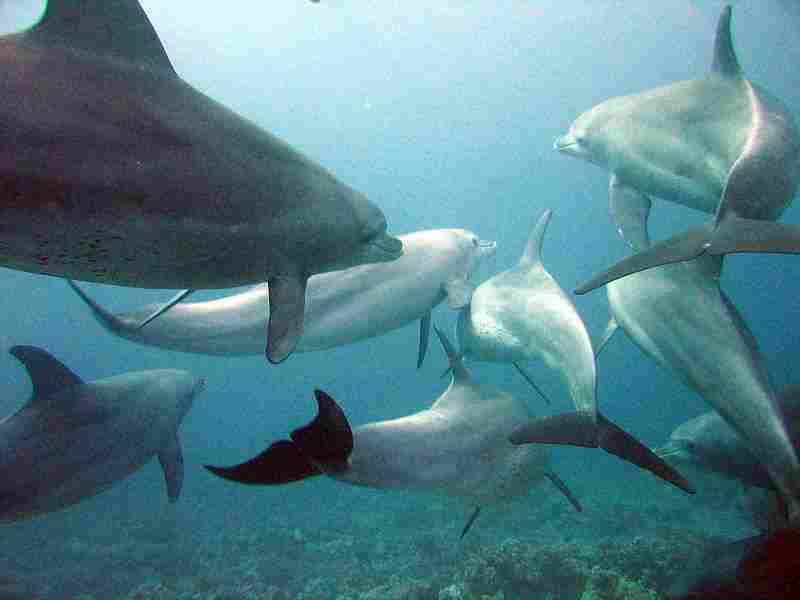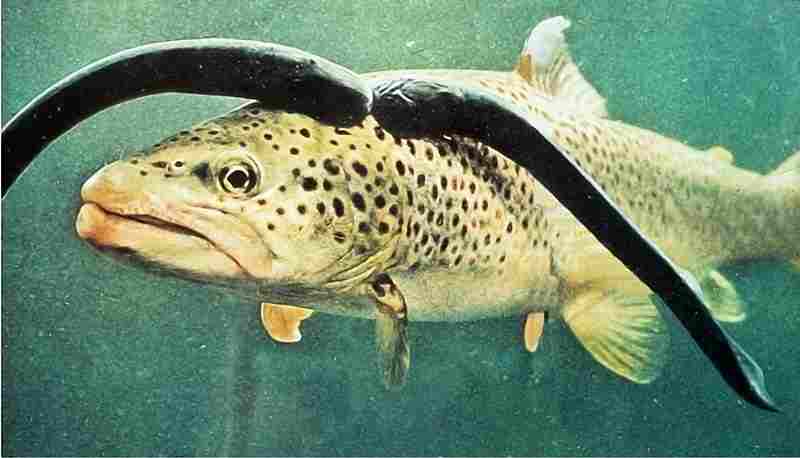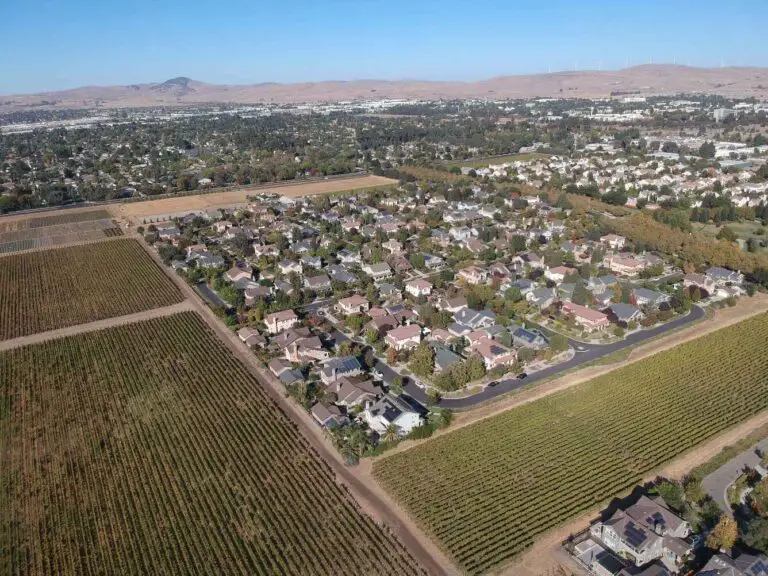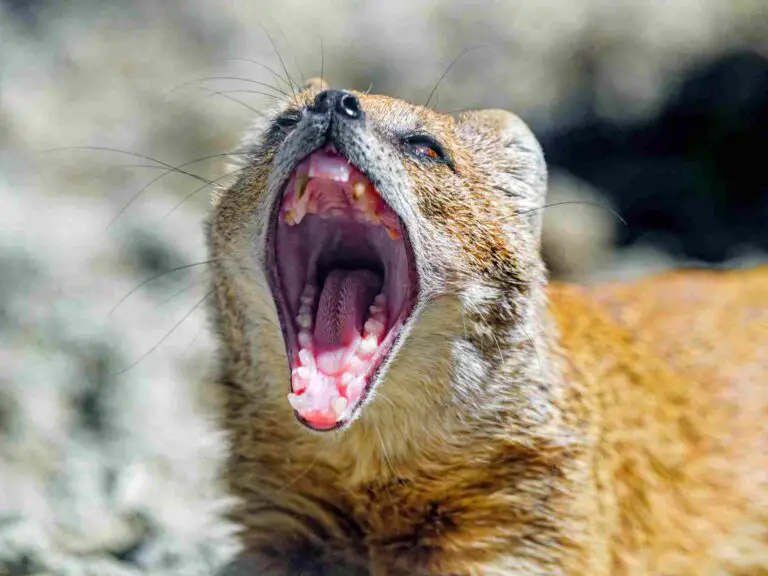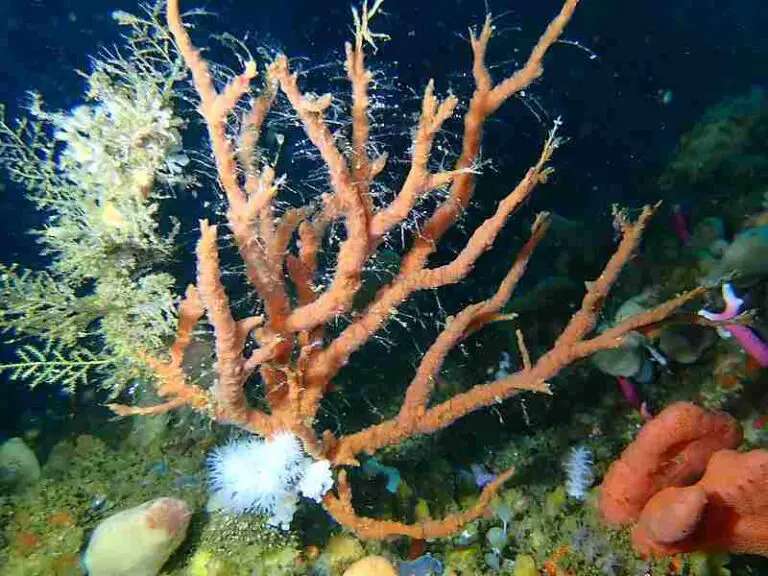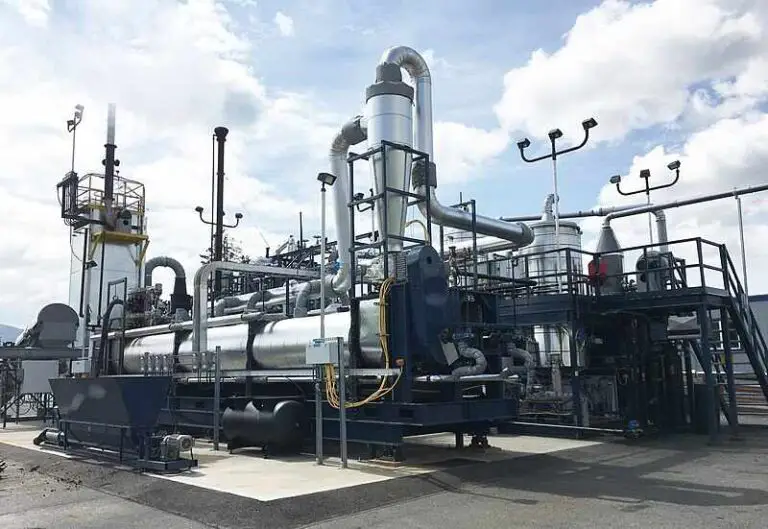11 Biotic Factors In The Everglades and Their Functions
Biotic factors in the Everglades include autotrophs, herbivores, carnivores, omnivores, decomposers, mutualism, commensalism, predation, parasitism, competition, and adaptation.
This article discusses biotic factors in the Everglades and their functions, as follows;
1). Autotrophs (as one of the Biotic Factors in The Everglades)
Autotrophs are an important biotic component of the Florida Everglades ecosystem.
They can be described as self-nourishing organisms, primarily comprising of plants, that play an effective role in shaping the ecological structure, energy flow, and overall functionality of the Everglades.
Functions of Autotrophs in the Everglades Ecosystem
The functions of autotrophs in the Everglades include; primary production; energy supply; habitat and shelter creation, nutrient recycling, oxygen production, and carbon sequestration.
Primary production is carried out by autotrophs, as they convert solar radiation into chemical energy (stored in the form of biomass) through photosynthesis [5]. They form the basis of the food chain, providing energy for other organisms.
Autotrophs serve as an essential energy resource for consumers, including herbivores, omnivores, and carnivores, which rely directly or indirectly on them for sustenance.
Diverse microhabitats for other organisms in the Everglades, are created by autotrophs. These microhabitats provide shelter, breeding sites, and food resources for various species.
Autotrophs play a major role in nutrient cycling by assimilating essential nutrients and subsequently releasing them back into the environment as they grow, die, and decompose.
Through photosynthesis and oxygen production autotrophs contribute to the oxygen cycle, and help maintain suitable oxygen levels for aquatic organisms in the Everglades [11].
Carbon dioxide from the atmosphere is sequestered by autotrophs, thereby helping to mitigate the impacts of climate change through storage of carbon in their tissues, and in the soil.
Examples/Types of Autotrophs in the Everglades
The examples/types of autotrophs in the Everglades include hydrophytes like sawgrass and swamp lily, as well as algae.
Sawgrass (Cladium jamaicense) is a dominant species of plant in the Everglades [16]. It forms expansive sawgrass marshes and provides critical habitat for numerous species.
Sawgrass is adapted to both submerged and emergent conditions, which makes it well-suited to the Everglades' fluctuating water levels.

The swamp lily (Crinum americanum) is another common autotroph that occurs in the Everglades. It grows in wetland areas, where it can be identified by its attractive white flowers. Swamp lilies contribute to the plant diversity of the ecosystem.
Algae are microscopic, autotrophic organisms that can be found within water bodies in the Everglades. These organisms contribute to the primary productivity of the ecosystem through photosynthesis, and provide food for many aquatic organisms.
Characteristics of an Autotroph in the Everglades
Characteristics of an autotroph in the Everglades include;
1. Photosynthetic capability
2. Hydrophytic adaptation
3. Food supply function
4. Nutrient-dependent growth
2). Heterotrophs
Herbivores, as biotic components of the Florida Everglades ecosystem, play an effective role in controlling the balance and diversity of this wetland habitat.
Functions of Herbivores in the Everglades Ecosystem
Functions of herbivores in the Everglades ecosystem include; regulation of plant growth, energy transfer, habitat alteration, and seed dispersal.
Regulation of plant growth rates and population sizes; is a function of herbivores, which they carry out by consuming vegetation [25]. This prevents overgrowth of certain plant species and helps to maintain a balanced and diverse plant community.
Energy from primary producers (plants) is transferred by herbivores to organisms in higher trophic levels of the food web/chain. They serve as a critical trophic link in the food chain, and provide sustenance for carnivores and omnivores.
The structure of the Everglades habitat is altered and modified by herbivores, through their feeding activities. For instance, herbivores like manatees help manage grass beds in the water bodies where they feed. These changes can have significant influence on the aquatic ecosystem.
Some herbivores unintentionally contribute to seed dispersal as they consume plant material. Seeds can pass through their digestive systems and be deposited in new areas through excretion, facilitating plant reproduction.
Examples of Herbivores Living in the Everglades
Numerous herbivorous species inhabit the Florida Everglades, each of which is adapted to the wetland environment.
Examples of herbivores in the Everglades are; white-tailed deer, Eastern cottontail, marsh rabbit, and West Indian manatee.
White-tailed deer are well adapted to aquatic environments and are able to swim across water bodies [19].
Eastern cottontail and marsh rabbit are both rabbit species that feed on various plants, contributing to the herbivore population.
West Indian manatee is a primarily herbivorous mammal that grazes on seagrasses and aquatic plants in the water bodies of the Everglades.

Herbivory as a Biotic Factor
Herbivory is indeed a biotic factor, because it involves living organisms and their interactions within an ecosystem.
Herbivores are a prime example of biotic factors as they interact directly with plants, which impacts their growth, spatial distribution, and abundance.
Overview of Animal and Plant Diversity in the Florida Everglades
The Florida Everglades is a haven for biodiversity. It hosts a wide variety of animals and plants that are uniquely adapted to the wetland environment.
Animal and plant diversity in the Florida everglades is represented by animals like; American alligators, banded water snakes, white-tailed deer, river otters, and plants like; sawgrass and swamp lilies.
3). Carnivores (as one of the Biotic Factors in The Everglades)
Carnivores are biotic components of the Florida Everglades ecosystem, and fully involved in maintaining the balance and health of this wetland habitat.
Functions of Carnivores in the Everglades Ecosystem
Functions of carnivores in the Everglades ecosystem include; regulation of prey populations, maintenance of biodiversity, energy transfer, and establishment of predator-prey relationships.
Carnivores help to control the populations of their prey species, and prevent overpopulation that could cause resource depletion and disrupt the ecosystem's balance.
Through the control of prey species, carnivores indirectly increase species richness and diversity in the Everglades, by preventing dominance of any particular prey species.
Energy flow is also facilitated by carnivores, which transfer energy from their prey in lower trophic levels, to the higher trophic levels which themselves occupy. This facilitation of energy flow is essential for the overall functioning of the food web.
Predator-prey relationships are established and sustained by carnivores, while they simultaneously regulate prey populations. Such relationships are important to the sustainability of the ecosystem, as they affect the distribution and abundance of plants (primary producers) due to herbivory.
Carnivores in the Florida Everglades
The Florida Everglades harbor a variety of carnivorous species that are adapted to the unique conditions of this wetland environment. Some prominent carnivores in the Everglades include; American crocodile, Florida panther, river otter, bobcat, and red fox.
American crocodile is an apex predator in the Everglades, and preys on a relatively broad range of animals. Their diet includes fish, crustaceans, mollusks, insects, and small mammals [2].

Florida panther is an endangered species [8] that preys heavily on white-tailed deer in the Everglades, which it supplements with smaller mammals like rodents.
River otters are relatively-small to medium-sized carnivores that feed on a diet of fish, amphibians and crustaceans, among other small aquatic animals.
Bobcats are opportunistic, carnivorous felines, which mostly target small mammals like rabbits, as well as birds.
Red fox is another small to medium-sized carnivore in the Everglades. It has a varied diet that comprises mainly of small mammals, birds, reptiles, and insects. Being opportunistic, red foxes may occasionally exhibit omnivorous tendencies.
Predator and Prey Relationships in the Everglades
In the Everglades, there exist some complex predator-prey relationships that help regulate the population dynamics, and contribute to overall ecosystem functioning.
Examples of predator and prey relationships in the Everglades, include;
1. Florida panther-white tailed deer/racoon/feral hog
2. American alligator-aquatic/terrestrial prey
3. River otter-aquatic prey
The Florida panther's prey include the white-tailed deer, racoon and feral hog respectively. Their feeding helps control the populations of these organisms, and indirectly influences plant communities by limiting herbivory; in what is known as the trophic cascading effect [4].
Being an apex predator, the American alligator feeds on a wide variety of animals, and influence the population dynamics of multiple species, including fish and mammals.
River otter also have a role to play in controlling populations of aquatic organisms such as fish and amphibians.
4). Omnivores
Omnivores are represented in the Florida Everglades ecosystem, and contribute to its dynamic balance as well as the intricate interactions between different biotic components.
Functions of Omnivores in the Everglades
By reason of their adaptability and diverse diet, omnivores in the Everglades perform functions like energy transfer, population dynamics-control, and seed dispersal.
Omnivores have the versatile ability to consume a wide range of food sources, including both plant and animal materials. This adaptability enables them to exploit different food resources, and respond resiliently to changes in availability of resources.
By consuming both plant and animal matter, omnivores facilitate the flow of energy between different trophic levels in the food web.
Omnivores can influence the populations of both plants and animals in the Everglades ecosystem; through their varied feeding habits.
Lastly, some omnivores can help to disperse the seeds of plants [13], thereby aiding in plant reproduction and maintenance of diversity.
Omnivores in the Everglades National Park
Omnivores found in the Everglades National Park, contribute to the diversity and complexity of this ecosystem.
Examples of omnivores in the Everglades National Park are; nine-banded armadillo, striped skunk, racoon, opossum, and Florida black bear.
The nine-banded armadillo is a distinctive mammal that can be recognized by its armored shell. While not a prominent inhabitant of the Everglades itself, the armadillo is found in many areas within the Everglades' environs. It is primarily insectivorous, but may occasionally feed on plant material.

Striped skunk is an omnivore with roughly-similar dietary choices to the nine-banded armadillo. Its food includes plant materials like fruits and foliage; combined with animal prey like mollusks, crustaceans and insects; as well as carrion [21].
Raccoons are adaptable omnivores that feed on a variety of foods, including turtle eggs, small aquatic organisms, plants, fruits, and insects.
Opossums are opportunistic feeders, and consume a mixture of fruits, insects, small animals, and carrion.
Florida black bears are also opportunistic omnivores, whose diet comprise of saw palmetto berries, acorns, fish, and honey.
Overview of Species Diversity in the Everglades
The Everglades National Park hosts a remarkable diversity of species due to its unique combination of habitats. In addition to omnivorous organisms, multiple other species and organic groups can be found in the Everglades.
Species diversity in the Everglades is composed of; amphibians like frogs, reptiles like crocodiles, birds (including raptors and waterfowl), mammals like river otter; as well as various invertebrates and microorganisms.
Amphibians in the aquatic environment of the Everglades are well-adapted to this environment, and include including frogs and toads.
The park is also home to numerous reptiles, such as turtles, snakes, alligators, crocodiles, and smaller lizards, each of which is adapted to specific microhabitats within the Everglades.
Birds in the Everglades include various species, that can be grouped into; wading birds, raptors, waterfowl; and several of which are migratory [3].
Lastly, the Everglades hosts diverse mammalian species such as the Florida panther, river otter, West Indian manatee, bobcat, and racoon.
5). Decomposers (as Biotic Factors in The Everglades)
Decomposers play an important role in the Florida Everglades ecosystem by facilitating the biodegradation of organic matter and recycling of nutrients, thereby ensuring the continuous flow of energy within the ecosystem.
Functions of Decomposers in the Everglades
Functions of decomposer in the Everglades include; nutrient recycling, detoxification/remediation, energy flow, and waste disposal.
Nutrient recycling is supported by decomposers as they break down complex organic matter into simpler inorganic products, releasing essential nutrients back into sediments and water.
These released nutrients become available to plants and other autotrophs, supporting their photosynthesis, growth and development.
Detoxification by decomposers helps the Everglades environment, by degrading potentially-harmful organic compounds that might otherwise accumulate and act as pollutants. This natural function can be utilized for environmental remediation and soil restoration projects, especially where pollution is caused by organic materials like hydrocarbons [7].
Energy flow is fostered by the activities of decomposers, which occupy a key position in the food web, and allow bioenergy to be released from organic remains/waste, and to flow back into the ecosystem.
This energy transfer mechanism has a positive impact on the survival of other Everglades organisms, including producers and consumers.
Lastly, decomposers contribute to waste management in the Everglades by breaking down plant and animal materials, thereby preventing the buildup of organic debris that could potentially interfere with ecosystem conditions.
Decomposers in the Everglades National Park
Decomposers in the Everglades ecosystem include bacteria, fungi; and detritivores like saprophytic nematodes, earthworms, and myriapods like the Florida ivory millipede (Chicobolus spinigerus). These organisms work in collaboration, to break down organic matter and recycle nutrients.
In this section, bacteria and fungi are discussed briefly as they are the two most common and dominant Everglades decomposers.

Bacteria are microscopic organisms that play a central, determinant role in breaking down organic material. They are highly efficient at degrading complex molecules into simpler forms.
Fungi are decomposers that specialize in breaking down relatively-resistant materials like wood and plant fibers [24]. They secrete enzymes that degrade complex organic compounds into smaller molecules that can be absorbed.
Role of Decomposers in Nutrient Cycling
Decomposers are essential for the nutrient cycling process in the Everglades ecosystem.
The role of decomposers in nutrient cycling is an initiative and facilitative one; as these organisms are responsible for breaking down biomass to release nutrients; and also work alongside other organisms to assimilate and use the released nutrients.
As decomposers break down organic matter, they release nutrients like nitrogen, phosphorus, and carbon back into the soil and water. These nutrients are then taken up by plants, which constitute the base/foundation of the food chain.
6). Mutualism
Mutualism is a prominent form of symbiotic interaction in the Florida Everglades.
It can be described as a setting where species engage in mutually beneficial relationships [6] that contribute to their survival and the stability of the ecosystem as a whole.
Functions of Mutualism in the Everglades
Functions of mutualism in the Everglades include; resource sharing, enhancement of fitness, ecosystem stability, and functional redundancy.
Resource sharing is an outcome of mutualistic relationships, because these are built on the exchange of resources between species. The resources exchanged can include nutrients, shelter, protection/defense, or other materials and services that contribute to the wellbeing of both partners.
As implied above, organic fitness stands to be improved my mutualism. It is common for mutualistic interactions to result in increased reproductive success and overall health for the species involved. This effect contributes to the persistence of these species within the ecosystem.
Since organic persistence is the basis of ecosystem stability, mutualism is capable of promoting stability in the Everglades ecosystem, by fostering interdependence between species.
When one partner benefits while enriching the other partner, the resilience of the ecosystem as a whole is improved.
Lastly, in some cases, mutualism facilitates functional redundancy, where multiple species perform similar ecological roles [12]. This redundancy reduces the risk of ecologic disruptions under stress, and increases the ecosystem's capacity to cope with disturbances or sudden changes.
Examples of Mutualism in the Everglades
Examples of mutualism in the Everglades include;
1. Alligator-piping plover
2. Unattached coralline algae-seagrass
3. Angiosperms and pollinators
The relationship between American alligator and piping plover (Charadrius melodus), is arguably the most common (and dramatic) form of mutualism in the Everglades.
Plover birds pick food particles from the alligator's teeth, helping to clean the teeth and remove potentially harmful, lodged materials, while obtaining a meal. This relationship benefits both parties involved.
Unattached, branched coralline algae protect seagrass meadows from overgrazing by sea turtles, by means of their spiny structures. In return, the seagrasses serve as a mechanical barrier that protects the algae from wave and tidal displacement [14].
Many flowering plants in the Everglades rely on pollinators, such as hummingbirds, bees, and butterflies, for pollination.
The plants provide these pollinators with a food source in the form of nectar, while the pollinators help the plants reproduce. This mutualism therefore results in plant reproduction and pollinator nutrition.
7). Commensalism (as one of the Biotic Factor in The Everglades)
Commensalism is another form of symbiotic interaction that occurs in the Florida Everglades, and is represented by a scenario where one species benefits from the association while the other remains neither helped nor harmed.
This type of relationship is among several others that define the biotic interactions within the ecosystem.
Functions of Commensalism in the Everglades
Functions of commensalism in the Everglades include; resource utilization, space maximization, and impact minimization.
The commensal species takes advantage of resources that are made available by the host species. These resources can include shelter, food, or microclimatic conditions that aid the commensal's survival.
Commensalism also leads to the utilization of unoccupied spaces, and optimization of such resources.
It is fairly common for commensals to find shelter or refuge in spaces created by the host, such as burrows and meadows. These unused spaces provide valuable protection and support for the commensal, while being maximized to prevent wastage.
Unlike parasitic relationships, commensalism does not cause harm to the host species. The commensal exploits the situation without inflicting detrimental effects on the host.
While the host species does not derive any particular benefit from the commensal, it is neither negatively impacted. This type of relationship has the advantage of allowing species to coexist and collaborate without major ecological consequences.
Example of Commensalism in the Everglades
An example of commensalism in the Everglades is the association between oyster and red mangrove trees.
Oysters often attach themselves to the branches and roots of red mangrove trees. While the oyster benefits by finding a substrate and a stable environment for growth, the red mangrove is not notably affected by this interaction. The oyster's presence neither causes harm nor provides significant benefit to the mangrove.
Red mangroves support the oysters by providing protection from sedimentation and the impacts of hydrological events like stormwater flow, and flooding [1]. This boosts the survival rate and wellbeing of the oyster community, without occurring at the expense of the mangroves.
8). Predation
Predation is an essential biotic interaction that occurs in the Florida Everglades.
It can be described as a dynamic where certain species hunt, capture and consume other organisms as a means of sustenance. This interaction plays a key role in shaping the population dynamics and maintaining the balance/diversity of species within the ecosystem.
Functions of Predation in the Everglades
Functions of predation in the Everglades include; prey population control, trait selection, food web maintenance;
Predators help to control the population sizes of their prey species, through feeding. By consuming prey, predators prevent the overpopulation of certain species, which in turn prevents excessive competition for resources, and maintains ecosystem balance.
Selective pressure is exerted on prey species through predation. Over time, prey populations may develop adaptive features that enhance their survival against predators, resulting in evolutionary changes in physiological structure and behavior.
Predation contributes to establishing and sustaining the complex food web in the Everglades. Different predator-prey relationships produce a network of trophic interactions that link various species together. Changes in one part of the food web can have ripple effects through the entire ecosystem.
Energy is obtained by predators from consuming prey, and this energy is transferred through the levels of the food chain. Predators play an important role in transforming the stored energy in lower trophic levels into higher trophic levels.
Examples of Predation in the Florida Everglades
Examples of predation in the Florida Everglades include predation by the American alligator, Florida panther, and Burmese python respectively; on organisms like fish, other reptiles, birds and mammals.
The American alligator carries out predation on several animals in its environment, including fish, birds, mammals, and other reptiles. It is equipped with powerful jaws, good swimming ability, and hunting skills that enable it function as an apex predator in the ecosystem.
Florida panther Florida is another Everglades apex predator that preys on white-tailed deer and smaller mammals.
The Burmese python is an invasive species in the Everglades [20] that preys on various native wildlife, including reptiles, birds, and mammals. Its presence in this ecosystem has led to concerns about its predatory and competitive impacts, on the native fauna.

9). Parasitism (as one of the Biotic Factors in The Everglades)
Parasitism is another biotic interaction that occurs in the Florida Everglades, and involves a relationship where one organism; called the parasite, benefits at the expense of another organism; called the host.
In spite of its negative implications for the host, parasitism is an essential component of the ecosystem, and contributes to its functionality and complexity.
Functions of Parasitism in the Everglades
Parasitism contributes to population regulation, organic sustenance, diversity, adaptation, decomposition and recycling, in the Everglades.
Regulation of host populations is an outcome of parasitism, which significantly influences the populations of host species [17]. By exerting pressure on host abundance, parasites prevent overpopulation of certain species, and may even help maintain the ecosystem's balance.
Parasitized hosts often serve as a food source for parasitoid predators, which may consume body fluids and other materials from the hosts for their own survival. This dynamic contributes to the intricate food web dynamics of the Everglades.
Diversity and organic adaptation are both facilitates by parasitism, which influences the characteristics of species in the ecosystem. Hosts may develop adaptations to defend themselves against parasites, while parasites may adapt to increase their resilience/resistance to these defenses. This leads to coevolutionary changes in both parasites and hosts.
In some cases, parasitic organisms contribute to the decomposition of organic remains, thereby recycling nutrients back into the ecosystem.
*Clarifying the Status of Lichens as an Example of Parasitism in the Everglades
Although the association between fungi and algae in lichens is widely considered to be mutualistic, there are some studies and arguments that have been made to the effect that this association has parasitic attributes, sometimes involving a third party organism, like a fungus, that is hosted by the lichen association [15].
Such arguments are generally less-proven than the opinion that lichens are symbiotic; but are based on the diversity and complex nature of such-inter organic relationships in general.
The fungi lives off on food provided by the algae, while providing a protective structure.
Examples of Parasitism in Florida Everglades
Examples of parasitism in the Florida Everglades include interactions in the plant community involving species like mistletoe (Phoradendron spp.), hog plum (Ximenia americana), and love vine (Cassytha filiformis).
Mistletoe is a hemi-parasitic plant found in Florida, which attaches mostly to larger plants like trees, and extracts nutrients from them while still photosynthesizing [18].
Hog plum is another hemi-parasitic plant that may attach itself to the roots of host plants, drawing nutrients from them.
Love vine is a parasitic plant that typically twines around host plants, in order to tap into their vascular system for nutrients.

10). Competition
Competition is one of the fundamental biotic interactions that occur in the Florida Everglades ecosystem.
It involves the struggle among organisms for limited resources such as food, territory, and nesting sites. This interaction plays a key role in shaping the composition and conditions of the biome.
Functions of Competition in the Everglades
Functions of competition in the Everglades include resource allocation, population regulation, biodiversity sustenance, and facilitation of species coexistence.
Resources are allocated among different species in the course of competition [9]. The scarcity of these resources causes organisms to evolve adaptations that allow them to access and utilize specific resources more effectively.
Population sizes are regulated through competition, by its influence on birth rates, death rates, and overall reproductive success.
When resources in the ecosystem are limited, organisms with competitive advantages thrive, while others may struggle to survive and reproduce.
Competition fosters biodiversity by encouraging species to occupy different ecological niches or roles. This diversity enhances the stability and resilience of the ecosystem, and makes it less vulnerable to disturbances.
Through competitive interactions, species that depend on similar resources develop various strategies to coexist, in order to reduce the detrimental impacts of intense, direct competition.
Impact of Competition on Biotic Factors
Competition affects biotic factors in several ways, which are similar to its functions in the ecosystem.
The impact of competition on biotic factors includes; population size control, adaptation, influence on spatial distribution, and niche partitioning/specification.
Intense competition can lead to notable fluctuations in population sizes. Severe scarcity of resources can cause populations to decline due to reduced reproductive success and/or higher rates of mortality.
Adaptation occurs as competition drives species to evolve specialized features that enhance their competitive capacity. These adaptations may include changes in behavior, or physiology.
Competition can influence the distribution of species within an ecosystem [10]. Species tend to be distributed according to the availability of resources, as well as their competitive abilities.
Other kinds of species interactions are influenced by competition, including predator-prey relationships. If a prey species faces intense competition for resources, its population may decline, affecting the predators that rely on it.
Lastly, competition encourages niche partitioning, where similar species occupy are caused to different ecological niches, in order to reduce direct competition. This often leads to increased species diversity within the ecosystem.
Impact of Competition on Ecosystem Health
Competition impacts the health and stability of an ecosystem in diverse ways; especially because it prevents any single species from becoming overly dominant.
This effect ensures that resources are distributed more evenly, and minimizes the risk of both resource depletion and ecosystem imbalance.
11). Adaptation (as one of the Biotic Factors in The Everglades)
Adaptation is an important mechanism through which organisms in the Florida Everglades ecosystem develop physiological traits, and behavioral attributes that enhance their chances of survival and reproduction.
The dynamic and ever-changing conditions of the Everglades have driven species to evolve different adaptations that help them thrive under the complex conditions of their environment.
Functions of Adaptation in the Everglades
In the Everglades, adaptation enhances organic survival, resource utilization, resilience; and coexistence.
Enhancement of survival can be attributed to adaptations because they enable organisms to better survive, and reproduce in their specific ecological niche.
These traits may include physiological characteristics, behaviors, or metabolic processes that increase the ability of an organism to find food, elude predators, and reproduce successfully.
Different species have developed adaptations that allow them to efficiently utilize available resources, such as light, water, and nutrients. For instance, plants like mangroves and sawgrass have adapted to the wet environment by developing specialized root systems [22].
Some adaptations provide protection against predators, environmental hazards, and other potentially harmful factors/conditions. Camouflage, a common example of such adaptation in the Everglades, and helps organisms to avoid detection and predation.
Adaptations can reduce direct competition through niche specialization, where species develop traits that allow them to exploit unique ecological niches, minimizing the intensity and impacts of competition with other species.
Examples of Adaptations in the Everglades
Examples of adaptations in the Everglades are; specialized mangrove roots, animal camouflage, and aquatic breeding strategies.
Mangrove plants have adapted to the wet ecosystem by developing extensive root systems that stabilize the soil, minimize erosion, and protect the land from wind and waves.
Camouflage occurs in many Everglades species, including frogs (amphibians), reptiles and mammals. These organisms have evolved natural camouflage to blend into their surroundings, making it difficult for predators (or prey) to detect them.
Also, amphibians like frogs have adapted to the wetland conditions by laying their eggs in water [23]. This strategy ensures the survival of their offspring in an environment suitable and supportive for their development.
How Animals Survive in the Everglades
Animals survive in the Everglades through humidity tolerance, camouflage, stealth, niche specialization, and diverse feeding strategies.
Animals like frogs, alligators, and various fish have adapted to the humid and waterlogged environment. As earlier stated, frogs lay their eggs in water, while alligators thrive in aquatic habitats.
Several animals have developed camouflage and stealth adaptations to avoid predators and increase their success in capturing prey. This includes blending into the environment, and utilizing controlled movement.
Different animal species occupy specific niches in the ecosystem with the help of their adaptations, allowing them to reduce competition for resources and thrive in their preferred microhabitat.
Also, adaptive features like enhanced senses, defensive behaviors, and warning coloration help some animals reduce the risk of predation.
Conclusion
Biotic factor in the Everglades include;
1. Autotrophs
2. Herbivores
3. Carnivores
4. Omnivores
5. Decomposers
6. Mutualism
7. Commensalism
8. Predation
9. Parasitism
10. Competition
11. Adaptation
References
1). Aquino-Thomas, J. M.; Proffitt, Ed. (2014). "Oysters Crassostrea virginica on red mangrove Rhizophora mangle prop roots: Facilitation of one foundation species by another." Marine Ecology Progress Series 503:177-194. Available at: https://doi.org/10.3354/meps10742. (Accessed 25 August 2023).
2). Balaguera-Reina, S. A.; Venegas-Anaya, M.; López, V. B.; Cristancho, A.; Densmore; L. D. (2018). "Food habits and ontogenetic dietary partitioning of American crocodiles in a tropical Pacific Island in Central America." Wiley, Ecosphere 9(9). Available at: https://doi.org/10.1002/ecs2.2393. (Accessed 26 August 2023).
3). Bancroft, G. T.; Gawlik, D. E.; Rutchey, K. (2009). "Distribution of Wading Birds Relative to Vegetation and Water Depths in the Northern Everglades of Florida, USA." Waterbirds 25(Sep 2002):265-277. Available at: https://doi.org/10.1675/1524-4695(2002)025[0265:DOWBRT]2.0.CO;2. (Accessed 26 August 2023).
4). Beschta, R. L.; Ripple, W. J. (2009). "Large predators and trophic cascades in terrestrial ecosystems of the western United States." Biological Conservation 142(11). Available at: https://doi.org/10.1016/j.biocon.2009.06.015. (Accessed 26 August 2023).
5). Chrost, R.; Faust, M. A. (1999). "Consequences of solar radiation on bacterial secondary production and growth rates in subtropical coastal water (Atlantic Coral Reef off Belize, Central America)." Aquatic Microbial Ecology 20(1):39-48. Available at: https://doi.org/10.3354/ame020039. (Accessed 25 August 2023).
6). Connor, R. (2008). "The Benefits of Mutualism: A Conceptual Framework." Biological reviews of the Cambridge Philosophical Society 70(3):427 - 457. Available at: https://doi.org/10.1111/j.1469-185X.1995.tb01196.x. (Accessed 25 August 2023).
7). Das, N.; Chandran, P. (2011). "Microbial Degradation of Petroleum Hydrocarbon Contaminants: An Overview." Biotechnology Research International 2011(2090-3138):941810. Available at: https://doi.org/10.4061/2011/941810. (Accessed 26 August 2023).
8). Fei, S.; Cox, J.; Whittle, A. (2011). "A perfect storm may threaten Florida panther recovery." Frontiers in Ecology and the Environment 9(6):317-318. Available at: https://doi.org/10.1890/11.WB.013. (Accessed 26 August 2023).
9). Gao, P.; Fan, X.; Huang, Y.; Chen, Y.-J. (2020). "Resource Allocation Among Competing Innovators." Available at: https://papers.ssrn.com/sol3/papers.cfm?abstract_id=3658157. (Accessed 26 August 2023).
10). Godsoe, W.; Murray, R.; Plank, M. (2015). "The effect of competition on species' distributions depends on coexistence, rather than scale alone." Ecography 38(11). Available at: https://doi.org/10.1111/ecog.01134. (Accessed 26 August 2023).
11). Hagerthey, S. E.; Cole, J.; Kilbane, D. (2010). "Aquatic metabolism in the Everglades: Dominance of water column heterotrophy." Limnology and Oceanography 55(2):653-666. Available at: https://doi.org/10.4319/lo.2010.55.2.0653. (Accessed 26 August 2023).
12). Jurburg, S. D.; Salles, J. F. (2015). "Functional redundancy and ecosystem function-the soil microbiota as a case study, in biodiversity." Available at: https://doi.org/10.5772/58981. (Accessed 26 August 2023).
13). Karimi, S.; Hemami, M.-R.; Tarkesh, M.; Baltzinger, C. (2019). "Endozoochorous dispersal by herbivores and omnivores is mediated by germination conditions." Available at: https://doi.org/10.21203/rs.2.15402/v2. (Accessed 26 August 2023).
14). Leemans, L.; Martinez, I.; van der Heide, T.; van Katwijk, M. M.; van Tussenbroek, B. I. (2020). "A Mutualism Between Unattached Coralline Algae and Seagrasses Prevents Overgrazing by Sea Turtles." Ecosystems 23(8). Available at: https://doi.org/10.1007/s10021-020-00492-w. (Accessed 25 August 2023).
15). Merinero, S.; Gauslaa, Y. (2017). "Specialized fungal parasites reduce fitness of their lichen hosts." Annals of Botany 121(1). Available at: https://doi.org/10.1093/aob/mcx124. (Accessed 25 August 2023).
16). Miao, S. L.; Kong, L.; Lorenzen, B.; Johnson, R. R. (1998). "Versatile Modes of Propagation in Cladium jamaicense in the Florida Everglades." Annals of Botany, Volume 82, Issue 3, September 1998, Pages 285–290. Available at: https://doi.org/10.1006/anbo.1998.0690. (Accessed 26 August 2023).
17). Moller, A. P. (2005). "Parasitism and the regulation of host populations." Parasitism and Ecosystems (pp.43-53). Available at: https://doi.org/10.1093/acprof:oso/9780198529873.003.0004. (Accessed 26 August 2023).
18). Muche, M.; Muasya, A. M.; Tsegay, B. A. (2022). "Biology and resource acquisition of mistletoes, and the defense responses of host plants." Ecological Processes 11(1). Available at: https://doi.org/10.1186/s13717-021-00355-9. (Accessed 26 August 2023).
19). Nelson, S. L.; Taylor, S. A.; Reuter, J. D. (2021). "An isolated white‐tailed deer ( Odocoileus virginianus ) population on St. John, US Virgin Islands shows low inbreeding and comparable heterozygosity to other larger populations." Wiley, Ecology and Evolution 11(3). Available at: https://doi.org/10.1002/ece3.7230. (Accessed 26 August 2023).
20). Orzechowski, S. C.; Romagosa, C. M.; Frederick, P. (2019). "Invasive Burmese pythons (Python bivittatus) are novel nest predators in wading bird colonies of the Florida Everglades." Biological Invasions 21(7):1-12. Available at: https://doi.org/10.1007/s10530-019-01979-x. (Accessed 26 August 2023).
21). Schneider, A. (2018). "Evaluation Of Movements And Habitat Use Of Suburban Striped Skunks (Mephitis Mephitis) In The Northern Great Plains To Inform Rabies Management" Theses and Dissertations. 2335. Available at: https://commons.und.edu/theses/2335. (Accessed 26 August 2023).
22). Srikanth, S.; Lum, S.; Chen, Z. (2015). "Mangrove root: adaptations and ecological importance." Trees 30(2). Available at: https://doi.org/10.1007/s00468-015-1233-0. (Accessed 26 August 2023).
23). Teal, C. (2020). "The Importance of Wetland Amphibian Life Cycles in Conservation Management." Available at: https://www.researchgate.net/publication/343678380_The_Importance_of_Wetland_Amphibian_Life_Cycles_in_Conservation_Management. (Accessed 26 August 2023).
24). Ujang, S.; Wong, A. H. H.; Jones, E. B. G. (2007). "Wood degrading fungi." Malaysian Fungal Diversity (pp.163-183). Available at: https://www.researchgate.net/publication/291349203_Wood_degrading_fungi. (Accessed 26 August 2023).
25). Wood, K. A.; O'Hare, M.; McDonald, C. M.; Searle, K. R.; Daunt, F.; Stillman, R. A. (2017). "Herbivore regulation of plant abundance in aquatic ecosystems." Biological reviews of the Cambridge Philosophical Society 92(2):1128-1141. Available at: https://doi.org/10.1111/brv.12272. (Accessed 26 August 2023).
